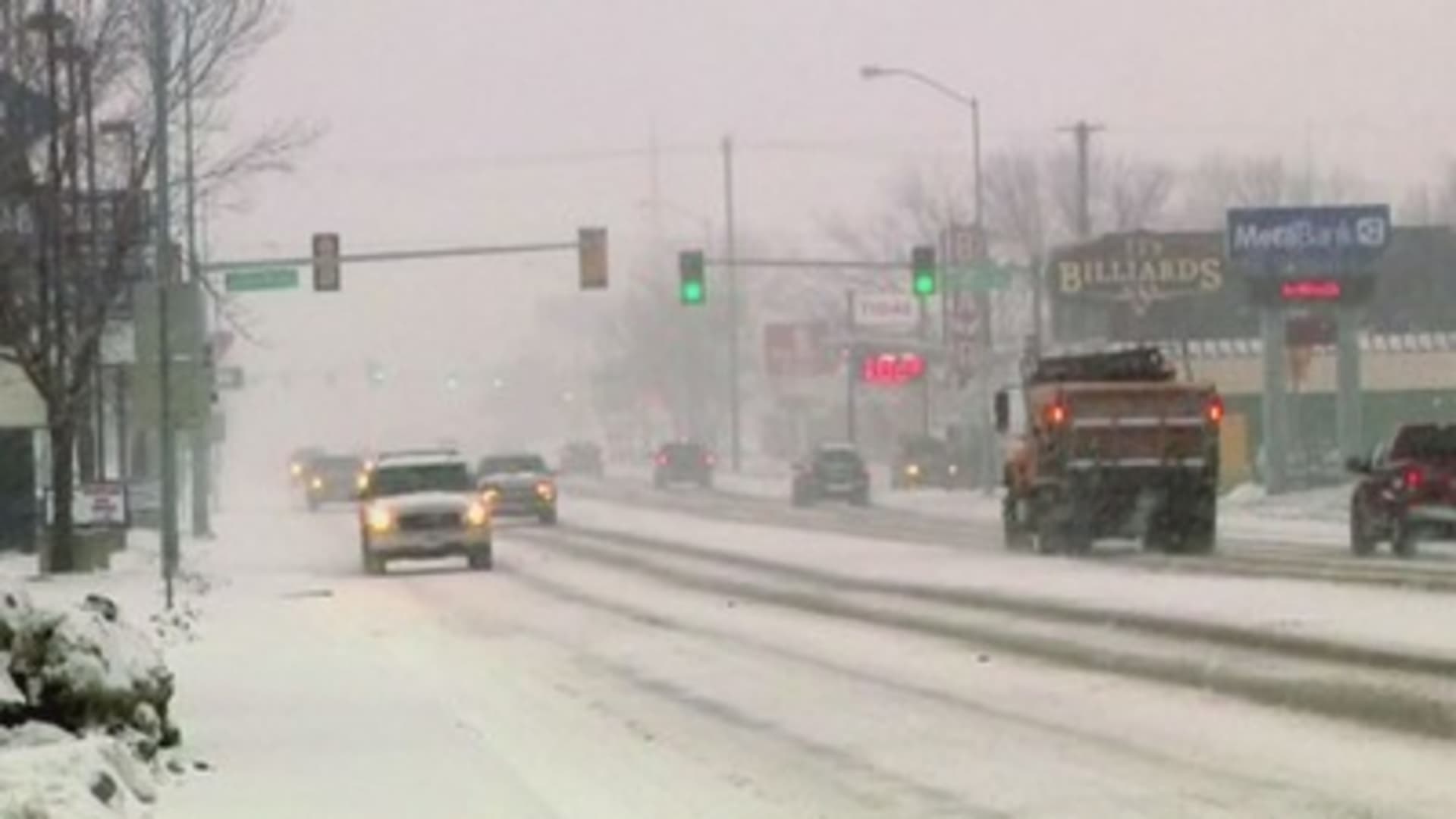Arctic Storm Brings Snow, Ice, and Sleet from Midwest to Northeast
A potent winter storm, described as one of the most severe of the season, has battered large portions of the Midwest and Northeast regions of the United States. Starting late Saturday and extending into the early hours of Sunday, the fast-moving system brought a treacherous mix of snow, sleet, and freezing rain. Millions of residents are under winter weather advisories, and the storm’s effects are expected to linger for days.
The National Weather Service (NWS) reported that over 15 million people from the plains to the northern Atlantic coast were directly in the storm’s path. Communities from the Dakotas to Maine face challenging conditions as heavy snow accumulations, icy surfaces, and powerful wind gusts combine to create treacherous environments.
Meteorologists forecast snow accumulations up to one foot in some regions, particularly in northeastern states such as New York, Vermont, and Massachusetts. Parts of the Midwest, including areas in Illinois, Ohio, and Michigan, experienced similar conditions with icy roads and dangerously low visibility.
Midwest Impact: Frozen Landscapes and Disruptions
The storm’s origins were tracked in the northern plains before it moved eastward. By late Saturday, it reached states such as Minnesota, Wisconsin, and Iowa, where blizzard-like conditions disrupted transportation and daily activities.
In Illinois, the city of Chicago experienced snowfalls that blanketed urban areas and created hazardous travel conditions. In nearby suburban and rural areas, freezing rain turned streets and highways into sheets of slick ice, significantly increasing the risk of vehicular accidents.
Moving further east, parts of Ohio and Michigan reported power outages affecting thousands of households. Fallen tree branches, weighed down by ice accumulation, damaged utility lines. Local authorities urged residents to remain indoors and avoid unnecessary travel.
Northeast Under Siege: Thick Snow and Freezing Rain
As the storm reached the Northeast late Saturday and into Sunday, its intensity only grew stronger. Massachusetts, Maine, New Hampshire, and Vermont bore the brunt of the snowstorm, with certain regions reporting over a foot of snow accumulation. Coastal areas experienced differential weather, with more freezing rain and sleet creating icy roadways.
New York City prepared for a mix of snowfall and icy rain, prompting the city’s Department of Sanitation to activate snow removal and salting protocols overnight. Commuters were warned of delays, and several public transit services limited their schedules due to dangerous conditions. Schools and businesses operating over weekends canceled their activities.
In Pennsylvania, major highways and secondary roads became treacherous as freezing rain formed a perilous layer over snow-covered surfaces. A multi-car pile-up occurred near Pittsburgh’s eastbound Route 22, underscoring the storm’s severity. Emergency medical personnel responded to several calls involving road accidents and hypothermia cases.
Air and Ground Transportation Affected
The winter storm wreaked havoc on travel plans across both regions. Airports including Chicago’s O’Hare International, Detroit Metropolitan Wayne County Airport, and Boston Logan International reported widespread cancellations and delays. Snow-removal trucks worked relentlessly as airline operators scrambled to reschedule stranded passengers’ flights.
Ground transportation encountered equally significant disruptions. Freight and commercial delivery trucks faced mounting difficulties on major interstate routes such as I-90 and I-80. In some cases, transportation officials issued advisories restricting access to high-profile vehicles like trucks and trailers due to wind gusts exceeding 40 mph.
Preparation and Responses
State and local governments declared emergency measures in anticipation of the storm’s impact. In Minnesota and New York, emergency facilities were prepared to assist stranded motorists, while warming stations opened to shelter people dealing with power outages. Vermont’s governor declared a state of emergency, enabling state agencies to coordinate relief efforts efficiently.
Utility companies in the Midwest and Northeast dispatched additional crews to address widespread outages. Residents were advised to prepare emergency kits including food, water supplies, candles, and battery-powered devices. Meanwhile, FEMA closely monitored the storm’s trajectory for mobilizing further federal resources if required.
Looking Ahead: Lingering Aftermath
Although the storm is expected to lose intensity as it moves into the Atlantic, residual effects such as melting snow and falling ice are heightening fears of flooding across the regions. Officials are especially concerned about areas where blocked storm drains exacerbate water pooling as temperatures oscillate.
Meteorologists urge residents to heed advisories, check weather forecasts, and limit outdoor activity until conditions stabilize. Road maintenance teams face the arduous task of clearing snow and spraying salt to mitigate ice hazards.
Communities across the Midwest and Northeast are bracing for the stark realities of rebuilding and recovery. While the storm’s wrath exemplifies nature’s unpredictability, coordinated responses and preparedness demonstrate human resilience.


